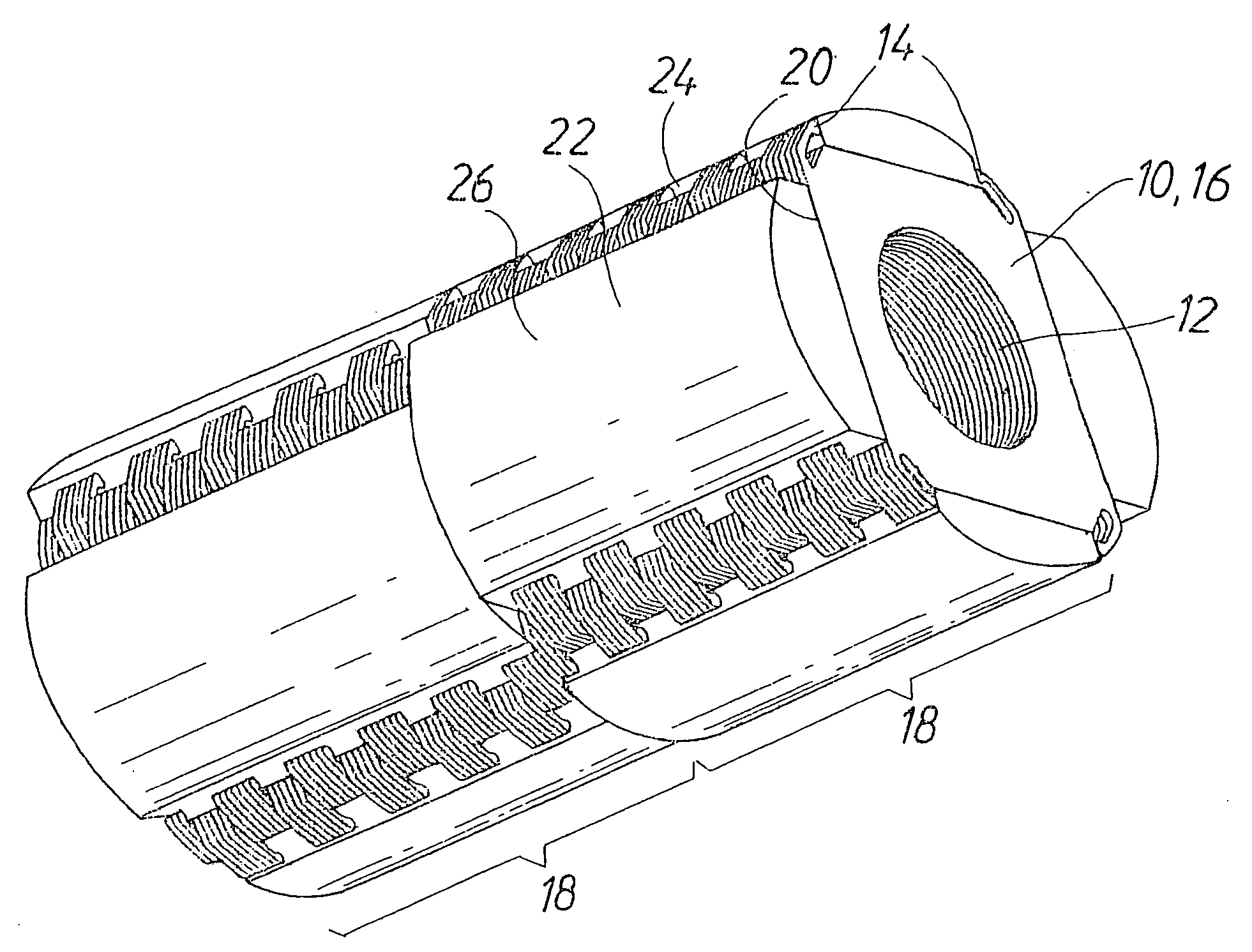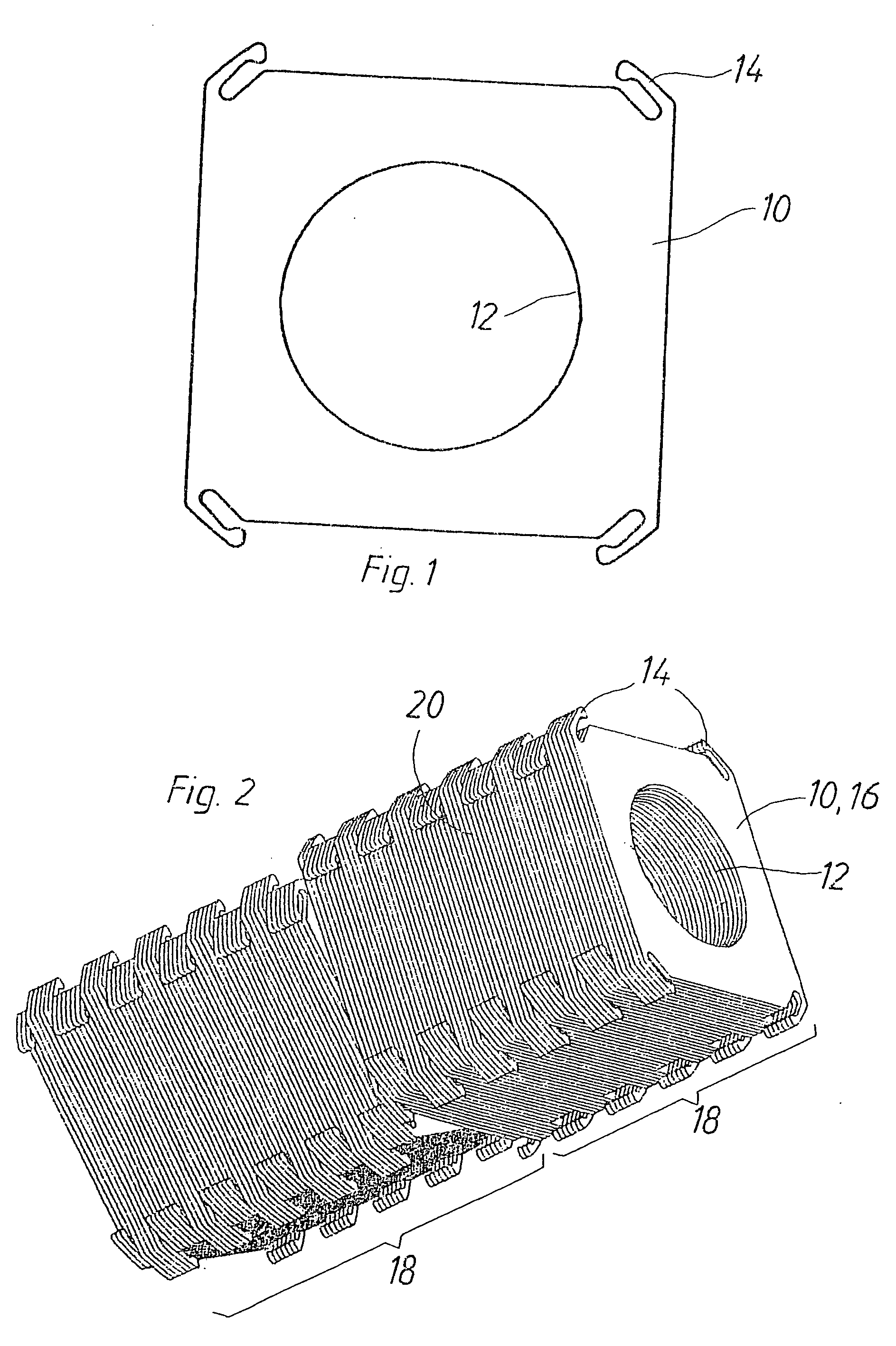Magnetic return path and permanent-magnet fixing of a rotor
a permanent magnet and return path technology, applied in the field of rotation, can solve the problems of increasing relative inaccuracy, inability to produce permanent magnets, and inability to accurately position
- Summary
- Abstract
- Description
- Claims
- Application Information
AI Technical Summary
Benefits of technology
Problems solved by technology
Method used
Image
Examples
Embodiment Construction
[0017] The lamination 10 shown in FIG. 1 is stamped out of a metal sheet. It has a substantially square shape with a center hole 12. On each corner, the lamination 10 has a spring element 14, which is embodied as a spring tongue that is integral with the lamination 10 and is produced in one operation along with the stamping out of the lamination 10. Instead of being stamped, the lamination 10 can also be produced with the spring elements 14 by laser cutting, water-jet cutting, erosion, or some other method. Two adjacent spring elements 14 each face toward one another and are associated with one another and form one pair of spring elements 14. In FIG. 1, the two upper and the two lower spring elements 14 are associated with one another respectively and form a pair.
[0018] For producing a short-circuit element 16, shown in FIG. 2, of a rotor of the invention, laminations 10 are assembled into a lamination packet 18. All the laminations 10 of the lamination packet 18 are identical and ...
PUM
 Login to View More
Login to View More Abstract
Description
Claims
Application Information
 Login to View More
Login to View More - R&D
- Intellectual Property
- Life Sciences
- Materials
- Tech Scout
- Unparalleled Data Quality
- Higher Quality Content
- 60% Fewer Hallucinations
Browse by: Latest US Patents, China's latest patents, Technical Efficacy Thesaurus, Application Domain, Technology Topic, Popular Technical Reports.
© 2025 PatSnap. All rights reserved.Legal|Privacy policy|Modern Slavery Act Transparency Statement|Sitemap|About US| Contact US: help@patsnap.com



